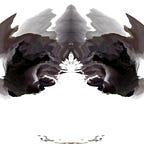Quick Prototyping ❋
Week 02 | Nov 18–20
Material Exploration, Nov 18
On Wednesday we spent the entire day quick prototyping with various materials. In the morning we worked individually from home, each trying out different things. We experimented with a range of materials, such as wax, glue, corn starch, paper pulp, and textiles. Later in the afternoon we met up at Roman’s apartment in Baden to share what we had tried out ourselves, and also continue with the prototyping. Since we brought all of our materials to Roman’s, there was an opportunity to experiment with new materials. After working we discussed the day’s process and progress over Glühwein, all agreeing that the material exploration was useful for future construction methods for our project, but that we now (starting tomorrow) want to direct our prototyping efforts more towards our concept of emotional literacy.
Quick Prototyping, Nov 19
Yesterday (Thursday) we began by considering what we want to pursue with regards to emotional literacy. The areas of interest were the following: kissing and the exchange of saliva; tears and the taboo that accompanies such an outburst of emotion; and emotions such and anxiety and stress which can build up and explode. We also briefly discussed how our prototype could consider others and the environment, not just the experience of a single user. Once we had agreed upon a few possible directions we got to work.
Inspired by William Gaver’s design workbooks, we used quick prototyping—instead of collaging and sketching—as a method to generate and externalize ideas. This helped us to clarify our ideas to each other, as well as create opportunities for interesting discussions and possible directions to pursue. For instance, we wanted to prototype a mask, but were not exactly sure how it would relate to any of our topics. We ended up constructing one with gips, using Roman’s face as the model. He laid himself down on a workshop table with a plastic bag over his face—to avoid a mess—and a plastic tube to breathe out of. We then dipped strips of gips into water and layered them over his face until we had a mask. With the help of a heat gun we were able to dry the mask much faster. This mask helped to generate a discussion about tears and the stains they create, and how maybe we could use drops of water to change the colour of Water-Activated Thermochromic Materials. We also thought of the expression a pool of tears and how maybe it could inspire our design, as well as tears made of wax and how they could change the shape of the mask over time.
In addition, we also experimented with a kind of harness or suit that allows you to feel the weight of your emotions. We did this with some throwaway materials we found in the workshop, as well as some water-filled balloons. If we were to pursue this, we would maybe adjust where the harness sits around the body and maybe prototype with a less precarious material.
Some other prototypes were developed, which explored the movement of woven rope and the translation of the sense of touch through thicker and tough materials using mechanical connections.
Initial Prototype & Mentoring, Nov 20
Although Friday was not our most productive day, we received very valuable feedback during our mentoring session with Joëlle and Andrés. In order to move forward and away from material exploration we need to better understand what the purpose and meaning behind our design is with regards to emotional literacy. Knowing our end goal will help give direction to our decisions. For this reason, we spent the rest of the day trying to decide whether we should focus on kissing and saliva, or tears and possibly the taboo behind them. After a bit of post-it note brainstorming we chose to focus on tears. This meant we really had to dig deep and ask questions like, “What does it mean to cry?” and “Why do we cry?”.
We also had a material we wanted to try out, which was goop. We wanted to see how it would behave when covering another surface—in this case a balloon. We tried blowing up the balloon and deflating it with the goop over it and you can see the results below.
